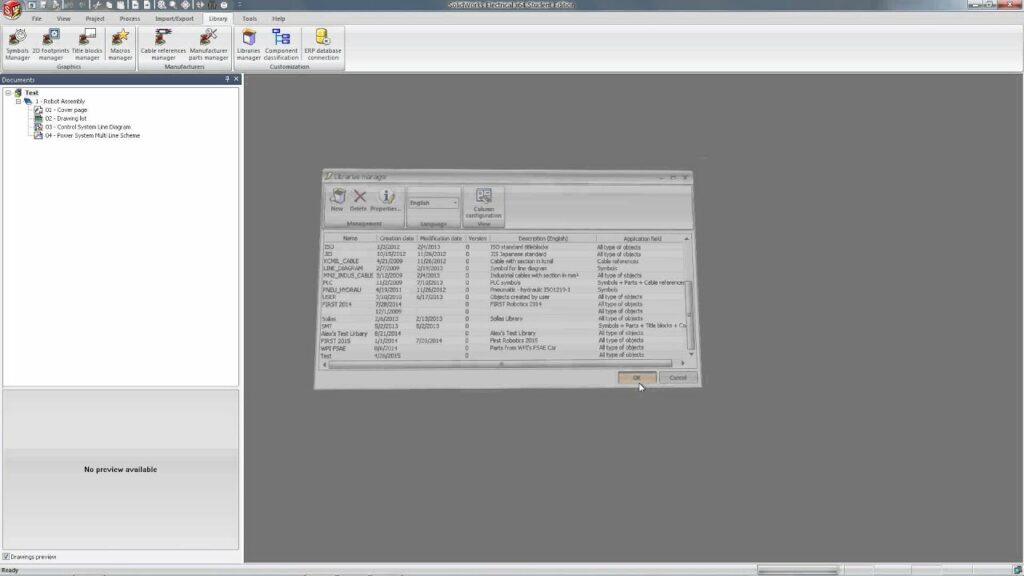Mastering SolidWorks: A Comprehensive Guide to Creating a New Project

Introduction: SolidWorks stands as one of the premier CAD (Computer-Aided Design) software solutions globally, renowned for its robustness, versatility, and user-friendly interface. Whether you’re an engineer, architect, or designer, mastering SolidWorks is essential for creating precise and detailed 3D models. One of the fundamental steps in utilizing SolidWorks effectively is learning how to create a new project. In this extensive guide, we’ll delve into the intricacies of starting a new project in SolidWorks, covering everything from setting up parameters to configuring project templates.
Step 1: Launch SolidWorks The first step in creating a new project in SolidWorks is to launch the software on your computer. Depending on your operating system and installation preferences, you can typically find the SolidWorks application icon either on your desktop, in the Start menu (Windows), or in the Applications folder (macOS). Double-click the icon to open SolidWorks and initiate the project creation process.
Step 2: Select Template Upon launching SolidWorks, you’ll be presented with the option to create a new document. SolidWorks offers a variety of templates to choose from, including part, assembly, and drawing templates. Select the template that best suits the type of project you’re working on. For example, if you’re designing a new mechanical component, you might choose the “Part” template. SolidWorks also allows you to create custom templates tailored to your specific needs.
Step 3: Define Project Parameters Once you’ve selected a template, you’ll need to define the parameters of your project. This includes specifying units of measurement, dimensions, and other project settings. SolidWorks offers a range of measurement units, including inches, millimeters, and meters, allowing you to work with precision and accuracy. Additionally, you can configure other project settings such as tolerances, material properties, and drafting standards to align with your project requirements.
Step 4: Set up Workspace With the template and project parameters defined, SolidWorks will open a new document in the workspace. The workspace is where you’ll create and manipulate your 3D models using SolidWorks’ comprehensive set of tools and features. Familiarize yourself with the various elements of the workspace, including the graphics area, feature manager design tree, command manager, and property manager. Customizing the workspace layout and toolbars can enhance your productivity and workflow efficiency.
Step 5: Begin Modeling Now that you’ve set up your project in SolidWorks, it’s time to start modeling your design. Depending on the type of project you’re working on, you can use a combination of sketching, extruding, revolving, and other modeling techniques to create your 3D geometry. SolidWorks provides a wide range of modeling tools and features to accommodate various design requirements, from simple parts to complex assemblies. Take advantage of features such as constraints, dimensions, and relations to ensure your models are accurate and well-defined.
Step 6: Save Your Work As you progress with your project in SolidWorks, it’s essential to save your work regularly to prevent data loss in case of unexpected interruptions or system crashes. SolidWorks allows you to save your documents in various formats, including native SolidWorks files (.sldprt for parts, .sldasm for assemblies, and .slddrw for drawings) as well as other industry-standard formats such as STEP, IGES, and STL. Choose a descriptive filename and directory location for your project files to facilitate organization and collaboration.
Step 7: Iterate and Refine Creating a new project in SolidWorks is an iterative process that often involves multiple design iterations and refinements. As you work on your project, don’t hesitate to experiment with different design concepts, features, and configurations. Use SolidWorks’ simulation and analysis tools to evaluate the performance and functionality of your designs, and incorporate feedback from stakeholders or clients to refine your models further. SolidWorks’ parametric modeling capabilities enable you to make changes to your designs quickly and easily, ensuring that your project evolves iteratively towards its final form.
Step 8: Document and Communicate Once you’ve completed your project in SolidWorks, it’s essential to document your work and communicate your designs effectively to stakeholders, collaborators, or manufacturing partners. SolidWorks provides tools for creating detailed drawings, exploded views, and assembly instructions directly within the software. Additionally, you can generate photorealistic renderings and animations to showcase your designs in presentations or marketing materials. Leveraging SolidWorks’ documentation and communication features helps ensure that your project is well-understood and can be successfully implemented or manufactured.
Conclusion: Creating a new project in SolidWorks is a foundational skill for anyone involved in 3D modeling and design. By following the steps outlined in this comprehensive guide, you can establish a solid foundation for your projects and leverage SolidWorks’ powerful tools and features to bring your design ideas to life. Whether you’re designing mechanical parts, architectural structures, or consumer products, SolidWorks provides the tools and capabilities you need to realize your vision with precision and efficiency. With practice and experience, you’ll become proficient in creating new projects in SolidWorks and unlock endless possibilities for innovation and creativity in your designs.




